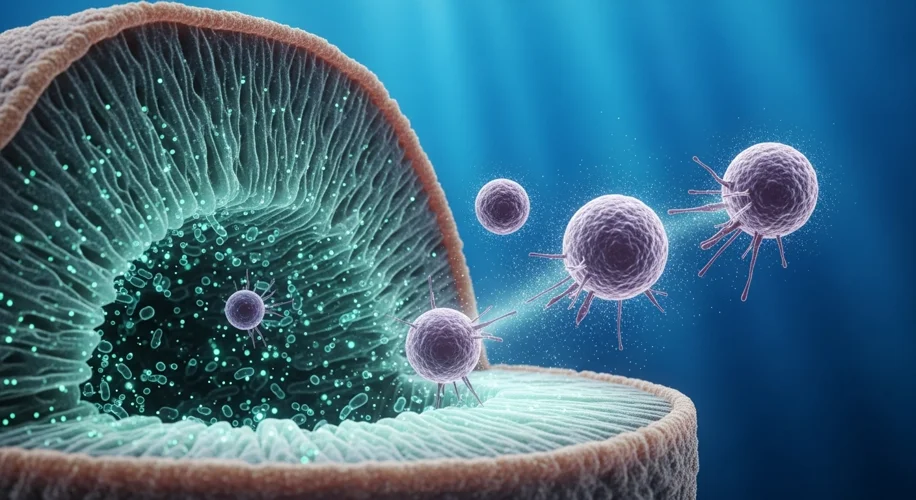Did you know that some of the smallest organisms in our oceans might hold powerful secrets to fighting cancer? I’m always fascinated by the incredible adaptations we find in nature, and this latest discovery from marine sponges is truly remarkable.
Researchers have identified a novel exopolysaccharide, a type of sugar molecule, produced by bacteria living within marine sponges. These bacteria, belonging to the genus Spongiibacter, are quite common in these ocean dwellers. What’s exciting is that this specific exopolysaccharide has shown a potent ability to trigger pyroptosis in cancer cells. Pyroptosis is a highly inflammatory form of programmed cell death, essentially a way for the body to rapidly eliminate damaged or infected cells.
Think of it like a targeted cellular demolition. When this exopolysaccharide interacts with cancer cells, it signals them to self-destruct in a very specific and orderly way, leaving surrounding healthy cells largely unharmed. This is a critical distinction because many traditional cancer treatments can also damage healthy tissues, leading to significant side effects.
This discovery opens up a new avenue for understanding how marine environments can contribute to human health. Sponges are filter feeders, constantly sifting through vast amounts of seawater, and the microorganisms living within them are exposed to a complex array of environmental factors. It’s possible that these symbiotic bacteria have evolved sophisticated defense mechanisms, like this exopolysaccharide, to survive and protect their host sponge.
For me, this research resonates with how interconnected everything is. Even at the microscopic level, there are complex interactions happening that we’re only just beginning to understand. This exopolysaccharide, found in bacteria within marine sponges, is a prime example of how nature, even in its smallest forms, can offer elegant solutions to complex problems like cancer.
While this is still early-stage research, the potential is immense. It highlights the importance of preserving our marine ecosystems, not just for their biodiversity or their role in climate regulation, but also for the untapped medicinal resources they may contain. Exploring these natural compounds could lead to new therapeutic strategies in the future.
It’s a reminder that the answers we seek are often right in front of us, or in this case, deep within our oceans, waiting to be discovered. I’m excited to see how this research progresses and what other secrets the ocean’s microbial communities might reveal.

